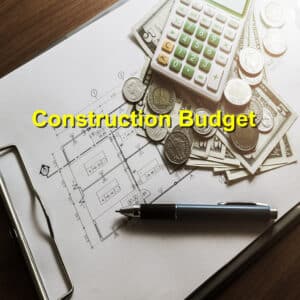In 2025, commercial construction costs are shaped by a complex interplay of labor, materials, regulations, and technological advancements. With U.S. construction spending at a seasonally adjusted annual rate of $2.139 trillion in July 2025, understanding these pricing factors is crucial for contractors, developers, and stakeholders to manage budgets and ensure project viability. Here’s a detailed breakdown of the key elements driving costs and strategies to optimize them.
Labor Costs
Labor accounts for 30–40% of commercial construction budgets. In 2025, labor shortages persist, with 195,000 unfilled jobs projected due to subdued hiring and immigration policies. Skilled trades like electricians and carpenters command premium wages, averaging $30–$50 per hour, with unionized regions seeing higher rates. Overtime to meet tight schedules, common in fall to beat winter delays, can increase costs by 20%. To manage, contractors can cross-train workers for flexibility and use referral programs to attract talent, reducing reliance on costly subcontractors.
Material Costs
Materials constitute 40–50% of project costs, fluctuating with supply chain dynamics and economic conditions. In 2025, steel prices have stabilized but remain 10% higher than pre-2020 levels, while lumber costs vary due to demand for sustainable options like thermally modified wood. Concrete, critical for foundations, faces price volatility from energy costs. Modular construction can cut material waste by 15%, and early procurement secures better rates before seasonal spikes. Monitor global supply chain trends, as potential tariffs could raise costs by 5–10%.
Regulatory and Permitting Fees
Compliance with building codes, such as the International Building Code (IBC) and ADA standards, adds 5–10% to budgets. Permitting fees vary by location—urban areas like New York charge $10,000–$50,000 for large projects. Environmental regulations, like LEED certification, increase upfront costs for eco-friendly materials but save 20% on long-term operations. Delays from failed inspections can add 2–5% in rework costs, so use Building Information Modeling (BIM) to ensure compliance early. Fall 2025’s lighter permitting demand can expedite approvals, saving time and money.
Technology and Equipment
Investing in technology, like BIM and drones, adds 3–5% to initial costs but reduces errors and rework by up to 20%. For example, BIM’s 5D modeling integrates cost and scheduling data, optimizing resource allocation. Equipment rentals, such as cranes ($1,000–$5,000/day), and maintenance for cold-weather protection (e.g., heated enclosures) are significant expenses. Robotics, like automated bricklayers, cut labor costs but require upfront investment. Leasing equipment during fall’s shoulder season can lower rates by 10–15%.
Site and Environmental Factors
Site preparation, including excavation and utilities, can account for 10–15% of costs, especially in urban or geologically challenging areas. Fall weather risks, like rain or early frost, may require dewatering systems or heated curing, adding $5,000–$20,000 per project. Sustainable site designs, such as stormwater management, align with 2025 trends but increase costs by 5%. Conduct geotechnical surveys early to avoid surprises like soil instability, which can inflate budgets by 10%.
Overhead and Contingency
Overhead, including project management and insurance, typically adds 10–15%. Contingency funds (5–10%) cover unexpected issues like weather delays or price hikes. In 2025, economic uncertainties, including interest rate fluctuations, necessitate robust contingencies. Use project management software like Procore to track expenses in real-time, minimizing overruns.
Strategies to Control Costs
- Plan Early: Lock in material prices and permits in early fall to avoid peak-season surcharges.
- Leverage Tech: Use BIM and drones to reduce errors and improve efficiency.
- Negotiate Contracts: Secure fixed-price contracts with suppliers to hedge against price volatility.
- Monitor Trends: Align with high-demand sectors like healthcare, projected to grow 4% in 2025, for better resource access.
By understanding labor, materials, regulations, technology, site factors, and overhead, contractors can navigate 2025’s pricing landscape, delivering cost-effective commercial projects while maintaining quality and compliance.
References: HunterSure, ConstructConnect




